News
May 6, 2013
A press release from CalCharge announcing the opportunity to partner with Lawrence Berkeley National Laboratory on battery research:Beginning this month, the rapidly emerging California battery sector will have access to new resources to accelerate its growth: an opportunity to work alongside world-class scientists at Lawrence Berkeley National Laboratory (Berkeley Lab). This opportunity is...
Read more
April 9, 2013
NEC Laboratories America, Inc. has provided Michael Stadler of the Grid Integration Group a gift in the amount of $60,000 to support his research in microgrids and energy storage. Previous gifts from NEC have supported research resulting in a publication titled “Electric Storage in California’s Commercial Buildings,” LBNL-6071E. The research examines whether buildings could serve as the hub...
Read more
February 12, 2013
CalCharge, a partnership of CalCEF and Lawrence Berkeley National Laboratory, has announced that it is teaming with San Jose State University to launch a battery university. Read the CalCharge press release at the link below....
Read more
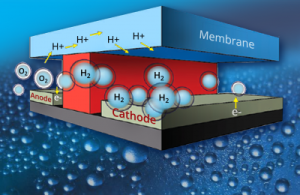
January 2, 2013
In the quest to produce an environmentally benign renewable fuel, scientists have explored many techniques to split water molecules to produce hydrogen. Still, the current photovoltaic designs are not yet technically or economically viable. Materials research in this area has been promising, but research on the engineering design of these photoelectrochemical systems has been sparse.To advance...
Read more
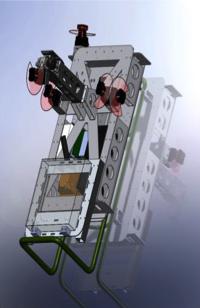
December 3, 2012
ARPA-E (Advanced Research Projects – Energy) has announced 66 research grants to develop transformational energy technologies. Two projects were awarded to Lawrence Berkeley National Laboratory (Berkeley Lab) researchers. Researchers from Berkeley Lab's Environmental Energy Technologies Division (EETD) will also participate in a third project awarded to the University of California,...
Read more
November 14, 2012
Vince Battaglia leads a behind-the-scenes tour of Berkeley Lab's BATT, the Batteries for Advanced Transportation Technologies Program he leads, where researchers aim to improve batteries upon which the range, efficiency, and power of tomorrow's electric cars will depend. This is the first in a forthcoming series of videos taking viewers into the laboratories and research facilities that members of...
Read more
May 29, 2012
CalCEF, which creates innovative financial products for the clean energy economy, and Lawrence Berkeley National Laboratory (Berkeley Lab) today announced a partnership to launch CalCharge, a consortium uniting California’s emerging and established battery technology companies with critical academic and government resources. By bringing together the dozens of battery companies and institutions...
Read more

December 2, 2011
The Department of Defense’s Environmental Security Technology Certification Program (ESTCP) recently announced the funding of 27 projects to demonstrate emerging energy technologies on military installations through its Installation Energy Test Bed initiative.Lawrence Berkeley National Laboratory’s Environmental Energy Technologies Division (EETD) and partner organizations were awarded two of...
Read more
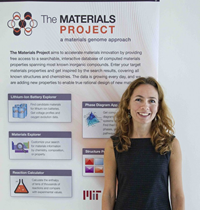
November 7, 2011
New materials are crucial to building a clean energy economy—for everything from batteries to photovoltaics to lighter weight vehicles—but today the development cycle is too slow: around 18 years from conception to commercialization. To speed up this process, a team of researchers from the U.S. Department of Energy's Lawrence Berkeley National Laboratory (Berkeley Lab) and the Massachusetts...
Read more
October 5, 2011
An antifogging coating technology developed by researchers in the Environmental Energy Technologies Division at the Lawrence Berkeley national Laboratory has won a 2011 R&D 100 award. The developers of Nanostructured Antifogging Coating are EETD's Sam Mao, Vasileia Zormpa and Xiaobo Chen.The coating provides a durable, nontoxic, antifogging and self-cleaning coating for architectural glass,...
Read more

September 27, 2011
Lithium-ion batteries are everywhere, in smart phones, laptops, an array of other consumer electronics, and the newest electric cars. Good as they are, they could be much better, especially when it comes to lowering the cost and extending the range of electric cars. To do that, batteries need to store a lot more energy. The anode is a critical component for storing energy in lithium-ion batteries....
Read more

September 20, 2011
A technology with the potential to increase the lithium-ion storage capacity of advanced batteries by eight times has been awarded a $240,000 grant from the University of California's Discovery proof-of-concept grant program to accelerate its entrance into the marketplace. This project is led by Gao Liu (Principal Investigator) and Vince Battaglia (co-PI) in the Environmental Energy Technologies...
Read more
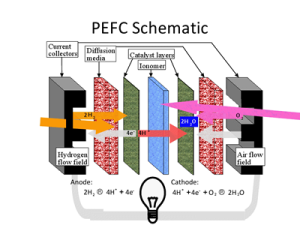
August 12, 2011
The Department of Energy has awarded up to $1.9 million to a research team led by EETD's Eric Masanet to develop "total cost of ownership" models for low- and high-temperature stationary fuel cell systems up to 250 kilowatts. The work will support research and development efforts for fuel cells by assessing the impact of state-of-the-art manufacturing technologies, system designs, and deployment...
Read more
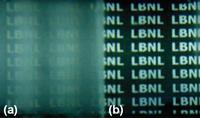
June 10, 2011
An antifogging coating technology developed by researchers in the Environmental Energy Technologies Division at the Lawrence Berkeley National Laboratory has won a 2011 R&D 100 award. The developers of Nanostructured Antifogging Coating are EETD's Sam Mao, Vasileia Zormpa and Xiaobo Chen.The coating provides a durable, nontoxic, antifogging and self-cleaning coating for architectural glass,...
Read more
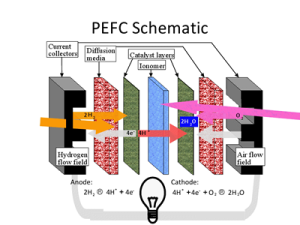
May 30, 2011
Fuel cells as a power generator simply look too good to be true. They're quiet, they don't produce criteria pollutants, and they're efficient electricity producers. They can be placed right next to a building without adding miles of transmission lines, and they won't bother passers-by any more than a fire hydrant or a dumpster—less than a dumpster.But they're not the perfect power source, not...
Read more

March 31, 2011
This article in The New York Times, "Building Better Batteries for Electric Cars," quotes Venkat Srinivasan, a scientist and blogger in the Environmental Energy Technologies Division here at the Lawrence Berkeley National Laboratory. The story addresses ongoing research at Berkeley Lab, Argonne National Laboratory and elsewhere to develop batteries for transportation with increased power density....
Read more

October 22, 2010
Sila Kiliccote, a researcher in the Environmental Energy Technologies Division, has received the 2010 GridWeek Award for Leadership in Smart Grid Acceleration. GridWeek cited Kiliccote for her "leadership, vision, non-traditional approach, ability to create step function vs. incremental change, and willingness to take risk." Gridweek is an annual gathering of Smart Grid stakeholders whose goal is...
Read more

September 16, 2010
Owners and operators of non-residential facilities are considering the use of on-site electrical storage or photovoltaic (PV) generation to reduce their carbon emissions and energy costs. When doing so, however, it is difficult to determine which options (or combination of options) are the most efficient and cost-effective. Vendors can help, but they are unlikely to offer an unbiased presentation...
Read more

August 6, 2010
Lawrence Berkeley National Laboratory (Berkeley Lab) and Pacific Gas & Electric Company were awarded Connectivity Week's Buildy Award earlier this year in Santa Clara, California.According to Connectivity Week, an annual industry trade conference addressing Smart Grid technologies that was held this year in Silicon Valley, the Buildy Awards are presented to "a company or organization that has...
Read more

August 3, 2010
Tien Duong, the Department of Energy's BATT Program Manager, discusses the past achievements and future of advanced battery research.Advanced battery researchers from around the U.S. gathered at Lawrence Berkeley National Laboratory June 27 to discuss future directions for the Batteries for Advanced Transportation Technologies (BATT) Program. BATT's Department of Energy Program Manager, Tien Duong...
Read more

July 20, 2010
A team of scientists at Berkeley Lab's Environmental Energy Technologies Division, and their private-sector partners (DuPont, Bosch, 3M, and Proton Energy), have been awarded more than $1.5 million from ARPA-E to research a novel flow battery system for storing energy on the electric grid. The Berkeley Lab researchers are Venkat Srinivasan, Vince Battaglia, and Adam Weber of EETD.EETD is also a...
Read more

May 27, 2010
The marketplace for Smart Grid technology products is expanding thanks in part to an open-source communications specification developed by Lawrence Berkeley National Laboratory (Berkeley Lab) and its research partners....
Read more

May 20, 2010
John Newman, a UC Berkeley Professor of Chemical Engineering, and scientist in EETD in the Environmental Energy Technologies Division of Lawrence Berkeley National Laboratory, has been selected to receive the prestigious Acheson Award by the Electrochemical Society. This award will be given to Newman at the next meeting of the Society, in Las Vegas during the week of October 10, 2010.Newman's...
Read more

May 11, 2010
The U.S. Department of Energy (DOE)'s Lawrence Berkeley National Laboratory (Berkeley Lab) has been awarded $8.6 million in Recovery Act funding for what the DOE calls "ambitious research projects that could fundamentally change the way the country uses and produces energy." The money will go towards four separate projects: one that will speed the development of materials that can absorb carbon...
Read more

April 28, 2010
"Just think how often your fancy new mobile phone or computer has become little more than a paperweight because the battery lost its zeal for doing its job," says John Chmiola, a chemist with the Lawrence Berkeley National Laboratory (Berkeley Lab). "At a time when cellphones can do more than computers could do at the beginning of the Clinton presidency, it would be an understatement to say that...
Read more